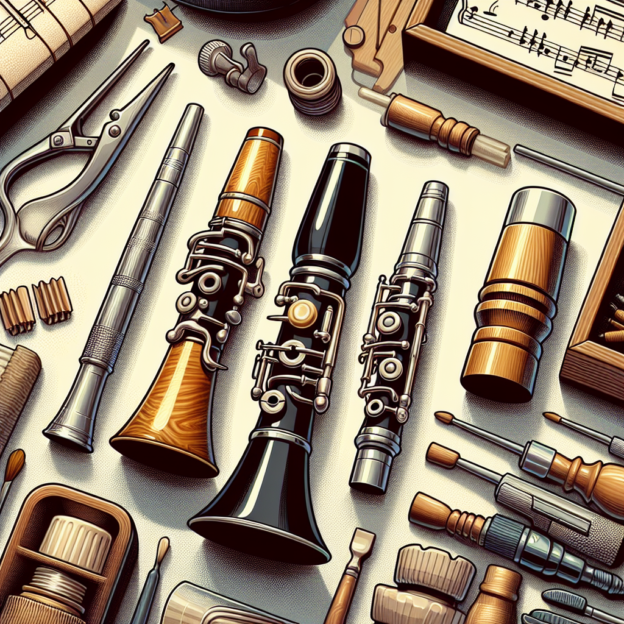The Importance of Clarinet Mouthpiece Materials
The clarinet mouthpiece plays a vital role in shaping the instrument's sound. It connects the player to the music, making the materials used in mouthpieces a hot topic among clarinetists. This article explores various historical clarinet mouthpiece materials, including ebonite, metal, and plastic, and how they influence the music and performance of this cherished woodwind instrument.
Ebonite: The Classic Choice
Ebonite has been a go-to material in the clarinet world for years. Prized for its warm, rich tone, ebonite offers a balanced sound that's tough to surpass. The production of ebonite involves mixing hard rubber and sulfur, resulting in a long-lasting and stable product. It gained popularity in the early 1900s and continues to be a top pick for many professional musicians. The density of ebonite contributes to its warm sound, and when used with high-quality reeds, the result can be truly magical!
As the saying goes, “you get what you pay for.” This rings especially true for clarinet mouthpieces. The material's quality significantly impacts the instrument's overall sound. The depth and richness of tone from a top-notch ebonite mouthpiece often outshines less expensive options.
Synthetic Mouthpieces: The Modern Alternative
As technology advanced and experimentation increased, clarinetists began to notice new options in the market. Synthetic mouthpieces, made from various plastics, grew in popularity due to their affordability and durability. These mouthpieces offer a surprisingly bright and clear sound quality. For newcomers to the instrument or frequent travelers, synthetic mouthpieces can be a smart choice.
| Mouthpiece Material | Tone Quality | Durability | Best Suited For |
|---|---|---|---|
| Ebonite | Warm, rich | High | Professional players |
| Synthetic | Bright, clear | Very high | Beginners, travelers |
| Metal | Edgy, projective | High | Jazz musicians, soloists |
Metal Mouthpieces: The Bold Choice
Metal mouthpieces have carved out a special place among jazz musicians and soloists seeking a more pronounced, projective sound. Usually crafted from brass or other alloys, metal mouthpieces excel at projecting sound. The tone tends to be louder and more piercing, which many musicians appreciate when they want to stand out during a performance.
An interesting aspect of metal mouthpieces is how they can change the perception of sound based on the specific metal used. Harder metals typically produce a brighter sound, while softer metals may offer a warmer tone. It's also important to note that ligature placement affects tonal quality, which can vary depending on the mouthpiece material.
The Evolution of Mouthpiece Design
Mouthpiece design has progressed over time, with even minor adjustments impacting playability. The facing, tip rail, and chamber shape all contribute to the nuances of sound production. A mouthpiece is more than just an accessory; it's an extension of the musician, shaped to align with their artistic vision.
The Legacy of Craftsmanship
Among the many options available, clarinetists universally appreciate brands committed to quality craftsmanship. Martin Freres, known for their high-standard instruments, has earned respect among clarinetists for producing mouthpieces with excellent resonance and playability. The combination of quality materials and expert design results in mouthpieces that sound beautiful and enhance performance across various musical genres.
Choosing Your Ideal Mouthpiece
When considering which mouthpiece to purchase, think about whether you prefer warm tones or bright, bold sounds. Do you need something sturdy for travel or performances, or are you interested in exploring the rich tradition of ebonite? No matter the material, understanding the unique characteristics of each can elevate your musical experience.
The world of mouthpiece materials offers a wide array of options to explore. The ongoing evolution of these materials demonstrates how clarinetists have consistently looked for ways to improve their sound.
Looking Ahead: Future Innovations
As we observe ongoing advancements in the music world, it's exciting to consider what new materials might bring. The next major breakthrough in mouthpiece technology could be just around the corner!







